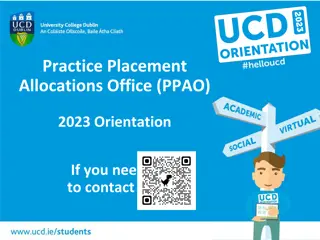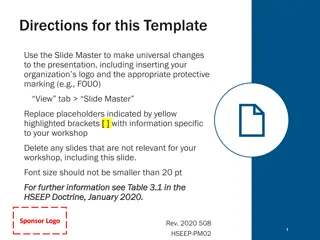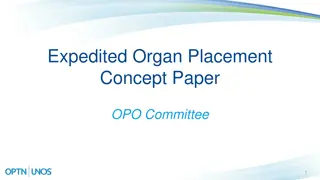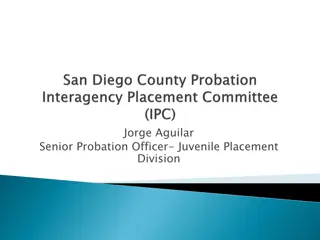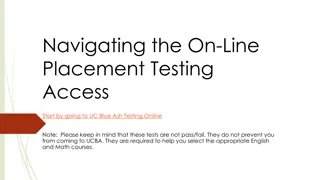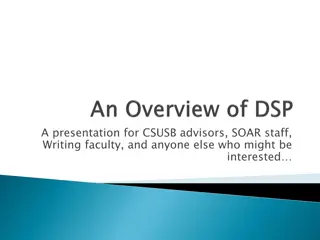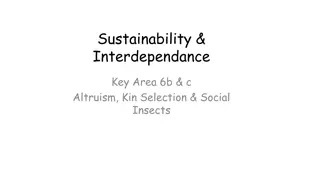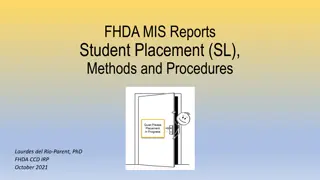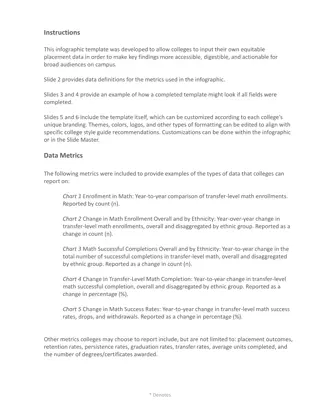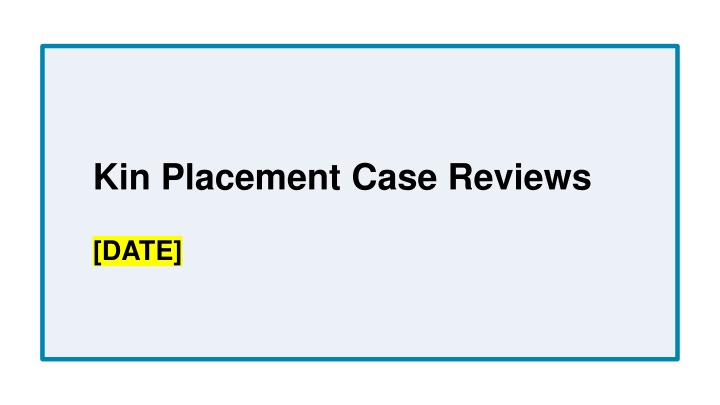
Improving Kinship Care for Children in Out-of-Home Placement Reviews
Review the cases to increase placements with kin for children in out-of-home care. Discover effective search practices and strategies to overcome challenges in pursuing kin placements. Reduce trauma, improve permanency, and ensure stability for children.
Download Presentation

Please find below an Image/Link to download the presentation.
The content on the website is provided AS IS for your information and personal use only. It may not be sold, licensed, or shared on other websites without obtaining consent from the author. If you encounter any issues during the download, it is possible that the publisher has removed the file from their server.
You are allowed to download the files provided on this website for personal or commercial use, subject to the condition that they are used lawfully. All files are the property of their respective owners.
The content on the website is provided AS IS for your information and personal use only. It may not be sold, licensed, or shared on other websites without obtaining consent from the author.
E N D
Presentation Transcript
Kin Placement Case Reviews [DATE]
Our goal: Review cases to enable as many children as possible to live with kin while in out-of-home care Why are we focused on kinship care? [Previous Month] s Placements: [#] removals and [#] children placed with kin Evidence shows that kin placements: [#]% of children placed with kin in [previous month] Allow children to maintain connections to family, community, & culture Case review goals: 1) Highlight effective search practices used by staff, even in cases where children were not initially placed with kin 2) Identify challenges encountered in each case, discuss strategies for continuing to pursue kin placement, & assign next steps 3) Follow up on cases with existing leads and support ongoing search activities to enable children to live with kin in the future Reduce trauma for children Improve time to permanency Are associated with fewer placement changes and higher placement stability for children 2
Children not placed with kin during [previous month] Date for follow-up Child name(s) Case ID Age Race Sex FTM? Genogram? Placement type CPS Supervisor 2 Bl F Yes No Foster home Greg Williams 9/15 Ex. Jane Smith 123456789 Questions to consider 1. Kin search practices: What did the team do well to proactivelyidentify potential kin placements? 2. Placement options: Were there any potential relative caregivers identified who were not able to take placement? What prevented placement? Is there anything that the team can do now to overcome these barriers? 3. Supporting ongoing search: What actions has the team taken to support subsequent search in this case? Are there any ongoing leads for possible kin placement? What is being done to continue pursuing these? 3
Updates on previously discussed cases Placement type Managed by/ supervisor Date for next follow-up Child name(s) Case ID Age Race Sex Previous follow-up actions Questions to consider: 1. Actions taken since last meeting: What has the team done to pursue any previously identified options for placement? What other follow-up actions has the team completed since we last checked in on this case? 2. Subsequent search: What subsequent search activities has the team undertaken? Have any additional kin placement options been identified? 3. Next follow-up actions: What next steps should the team take to pursue placement with kin? When should we follow up on this case? 4
Key strategies for identifying & placing children with kin Overall Leveraging information tools Solicit information about potential placements from parents as early as possible during the investigation, especially for hospital cases Ask about fictive kin as well as relatives for placement options fictive kin placements are just as stable as relative placements overall Seek approval for placements with kin w/ criminal or central registry history when appropriate Actively pursue multiple placement options simultaneously in case first option falls through Research prior history and kin contacts Use search engines and social media to identify relatives, especially paternal family Engaging parents & kin Have different staff members reach out to contacts Speak with contacts multiple times to get as much information as possible Communicate urgency of the situation and importance of kin placements Hold FTMs prior to removal to empower family to weigh in on potential kin placement options In cases with older children, ask youth where they would like to live Inform relatives of supports that are available to them (e.g., childcare) Proactively connect relatives to supports to enable them to take placement Supporting subsequent search Thoroughly document search process (e.g., genograms) to facilitate continued relative search in foster care Regularly review non-kin placements to identify next steps for follow-up (every 3 months) Follow up with case management staff to ensure search continues & staff pursue outstanding leads for placement 6
Discussion questions | Recent non-kin placements Supporting ongoing search: Kin search practices: Placement options: What actions has the team taken to support subsequent search in this case? o Was a genogram completed? o Did CPS share information about possible leads with the case management team? Are there any ongoing leads for possible kin placement? What is being done to continue pursuing these? o If a potential relative has been identified, has the team been in contact with them? o If the team has been having trouble getting in touch, what other tactics have they used? What do you think the team did well in this case to proactively identify potential kin placement options? Did the team pursue all potential avenues for search? E.g. potential search tactics include: o Build understanding of family / support network early in the case o Use SACWIS to identify potential relatives o Explore fictive kin options (esp. for teens) o Multiple outreach attempts / use different individuals to do outreach Were there any potential relative caregivers identified who were not able to take placement? What prevented placement? Is there anything that the team can do now to overcome barriers to placement o If finances or housing were a concern, did the team inform the caregiver of supports available? o If a past criminal record or central registry history was a barrier, did the team consider completing a placement exception? 7
Discussion questions | Follow-up from previous cases Actions taken since last meeting: Next follow-up actions: What has the team done to pursue any previously identified options for placement? o If there were outstanding leads, have they been contacted? If the team hasn t been able to get in touch, what other tactics have they used? o If any possible placement options had barriers to placement (financial, criminal records/ central registry history), has the team taken steps to attempt to address them? Has the team re-engaged parents or other relatives to ask about potential options? Have any additional kin placement options been identified? What other follow-up actions has the team completed since we last checked in on this case? What next steps should the team take to pursue placement with kin? o Who is responsible for completing these steps? When should we follow up on this case? o For cases with immediate follow-up actions (i.e. a home study is planned): in 1-2 weeks o For cases where actions should be taken soon (i.e., one or more relatives have indicated interest but have not committed to taking placement): 1 month/ at the next case review meeting o For cases where there are no current leads or promising options for kin placement: in 3 months 8

